Airlifted in from Bolivia’s western highlands, some two dozen elite officers in green helmets and flak jackets entered the Las Americas Hotel just before 4am, disabled its surveillance cameras and stealthily made for the fourth floor.
A bomb exploded. After 15 minutes of gunfire, three men were dead in their underwear on separate hotel room floors: A Bolivian-born Hungarian, an Irishman and a Romanian. Two of their comrades with ties to Croatia and Hungary were arrested in rooms down the hall.
A few hours later, Bolivian President Evo Morales announced during a visit to Venezuela that an assassination plot against him, hatched by right-wing extremists and employing foreign mercenaries, had been foiled on his instructions.
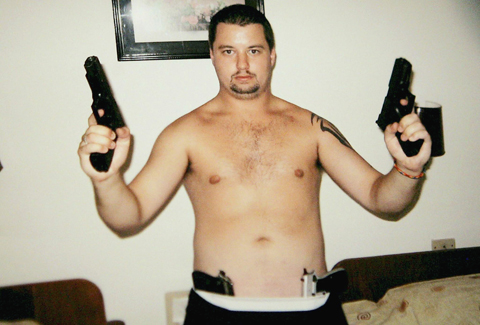
PHOTO: EPA
“Before I left,” he said, “I gave the order.”
The strange events of April 16 have only deepened political and social rifts in this nation of 10 million, where Morales, an Indian and a strident leftist, faces an intransigent foe in the light-skinned elite of this provincial capital.
Bolivian Vice President Alvaro Garcia has blamed the alleged plot on “the fascist and racist right” of Santa Cruz.
Morales’ opponents in turn claim the government is trying to discredit them and bolster his campaign for re-election in December.
Hungary, Ireland, Romania and Croatia have all asked for what the latter called “a full and impartial” accounting. Was it not possible to wait a few hours and capture the alleged conspirators peacefully at breakfast?
“The Irish government has a legitimate right to seek the facts of how one of its citizens came to be killed by the security forces of another state,” Irish Foreign Minister Michael Martin said.
Yet more than two weeks after the raid, Bolivia has yet to provide details of the alleged conspiracy. It’s a puzzle, in the words of Hungarian Foreign Minister Peter Balazs, in which the pieces don’t fit.
An indignant Morales at first resisted the calls for explanation.
Then, at the UN on April 22, he said he was willing to accept an international investigation.
WARRIOR CREDENTIALS
Such a probe would almost certainly begin with Eduardo Rozsa Flores, the only one of the slain men with clear warrior credentials.
In September, he told a TV journalist in Hungary that he was returning home to organize a militia. You can only broadcast the interview, Rozsa said, if I don’t return alive.
Born in Santa Cruz 49 years ago to a Hungarian father and Bolivian mother, Rozsa boasted in interviews and in a blog of serving as a translator for “Carlos the Jackal” when the Venezuelan terrorist was living in then-communist Hungary.
After the Berlin Wall fell, Rozsa became a minor celebrity in Croatia for commanding a brigade of foreign volunteers in its 1991 independence war. A poet, journalist and recent convert to Islam, he later starred as himself in Chico, a biopic that won best film in Hungary’s national cinema festival in 2002.
The other two slain men apparently lacked Rozsa’s combat experience, if not his sense of adventure. So under what premise — and for what exactly — did he recruit them? Michael Dwyer was a 24-year-old Irish security guard whose family said he went to Bolivia in October looking for work. His Facebook pages show he liked to play Airsoft, a game similar to paintball.
Arpad Magyarosi, 29, was an ethnic Hungarian rock musician and schoolteacher from Romania who relatives said loved to travel.
The raid’s two survivors were flown to the highlands capital of La Paz and jailed without bail on terrorism charges after a closed hearing. They are Mario Tadic, a 51-year-old Bolivian-Croat comrade-in-arms of Rozsa from the Balkans, and Hungarian computer technician Elod Toaso.
Bolivian Defense Minister Walker San Miguel said Rozsa recruited Toaso, 28, through the Szekler Legion, a right-wing group that promotes autonomy for Romania’s ethnic Hungarians. Hungary’s ambassador, Matyas Jozsa, told reporters after visiting Toaso in jail that the former bank employee may not have understood what he was getting into.
He believes the slain men never had a chance to surrender and said Toaso saved himself by diving face-down to the floor and putting his hands on the back of his neck.
How Tadic survived is unclear.
The hotel’s manager, Hernan Rossell, told reporters he arrived on the scene 10 minutes after the shooting ended and saw Rozsa’s body on the floor, a revolver about 40cm from his right hand and a bullet wound in his face. It was the only weapon Rossell said he saw on the fourth floor not wielded by the police, none of whom were injured in the raid.
Julio Larrea, a police investigator, said the alleged mercenaries set off a C4 plastic explosives charge just before the shootout began. He said police recovered guns at the scene, though he didn’t specify how many or where, except that a handgun and a silencer were found in Rozsa’s room.
Authorities have offered no evidence that the slain men fired weapons. An autopsy done on Dwyer’s badly decomposed body in Ireland determined he was killed by a single gunshot to the chest, but apparently little more.
Many aspects of the case are still a mystery.
POSERS
On the day of the raid, Bolivian police confiscated about a dozen weapons at a convention center booth that they said the alleged assassins had rented through a local telecommunications company or a business fair. Prosecutor Marcelo Sosa later showed photos he said were found at the convention center booth of all the alleged mercenaries (not including Tadic) posing with guns. In one, Dwyer has a pistol in each hand.
Police also said the men were responsible for a dynamite blast the day before at the home of the local Roman Catholic cardinal in which nobody was hurt and minor damage incurred. They presented another man, Juan Carlos Gueder, who has been arrested on terrorism charges. Gueder told reporters he sold Rozsa a pistol and that Rozsa said he planned to assassinate Santa Cruz Governor Ruben Costas to make him “a martyr.”
Vice President Garcia said the alleged mercenaries were planning to kill him and Morales, then “organize civilian groups for an armed resistance to violently seize power.”
The evidence authorities have provided to date is a three-minute video that Sosa says was obtained from an informant. He says it shows the three slain men lamenting missing a chance to bomb a boat on which Morales held a Cabinet meeting in Lake Titicaca early last month.
The accompanying audio is unclear, however. Reporters who viewed it could make out words including “Titicaca,” “wetsuit” and “explosives” but no clear narrative.
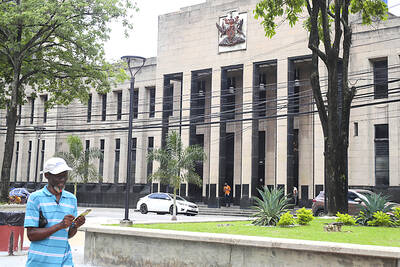
Trinidad and Tobago declared a new state of emergency on Friday after authorities accused a criminal network operating in prisons across the country of plotting to kill key government officials and attack public institutions. It is the second state of emergency to be declared in the twin-island republic in a matter of months. In December last year, authorities took similar action, citing concerns about gang violence. That state of emergency lasted until mid-April. Police said that smuggled cellphones enabled those involved in the plot to exchange encrypted messages. Months of intelligence gathering led investigators to believe the targets included senior police officers,
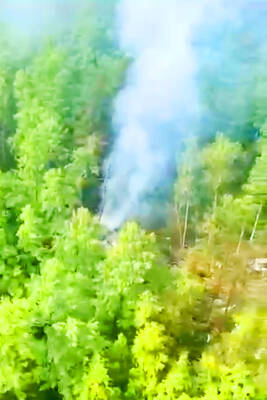
FOREST SITE: A rescue helicopter spotted the burning fuselage of the plane in a forested area, with rescue personnel saying they saw no evidence of survivors A passenger plane carrying nearly 50 people crashed yesterday in a remote spot in Russia’s far eastern region of Amur, with no immediate signs of survivors, authorities said. The aircraft, a twin-propeller Antonov-24 operated by Angara Airlines, was headed to the town of Tynda from the city of Blagoveshchensk when it disappeared from radar at about 1pm. A rescue helicopter later spotted the burning fuselage of the plane on a forested mountain slope about 16km from Tynda. Videos published by Russian investigators showed what appeared to be columns of smoke billowing from the wreckage of the plane in a dense, forested area. Rescuers in
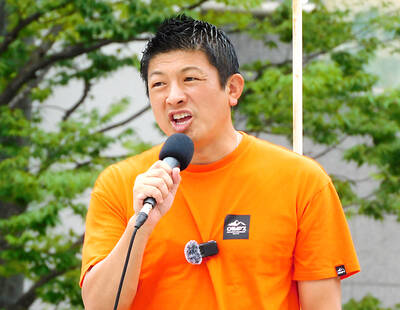
A disillusioned Japanese electorate feeling the economic pinch goes to the polls today, as a right-wing party promoting a “Japanese first” agenda gains popularity, with fears over foreigners becoming a major election issue. Birthed on YouTube during the COVID-19 pandemic, spreading conspiracy theories about vaccinations and a cabal of global elites, the Sanseito Party has widened its appeal ahead of today’s upper house vote — railing against immigration and dragging rhetoric that was once confined to Japan’s political fringes into the mainstream. Polls show the party might only secure 10 to 15 of the 125 seats up for grabs, but it is
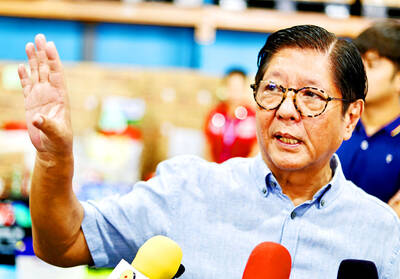
Philippine President Ferdinand Marcos Jr is to meet US President Donald Trump this week, hoping Manila’s status as a key Asian ally would secure a more favorable trade deal before the deadline on Friday next week. Marcos would be the first Southeast Asian leader to meet Trump in his second term. Trump has already struck trade deals with two of Manila’s regional partners, Vietnam and Indonesia, driving tough bargains in trade talks even with close allies that Washington needs to keep onside in its strategic rivalry with China. “I expect our discussions to focus on security and defense, of course, but also